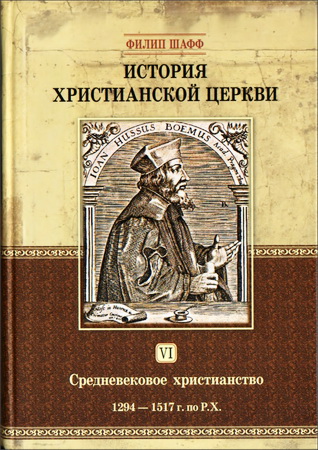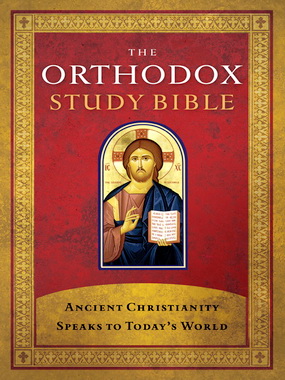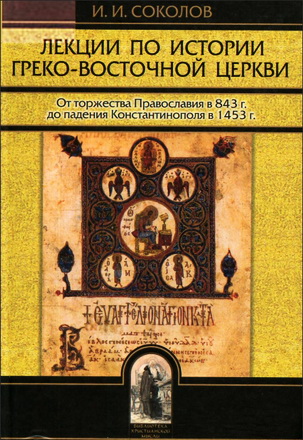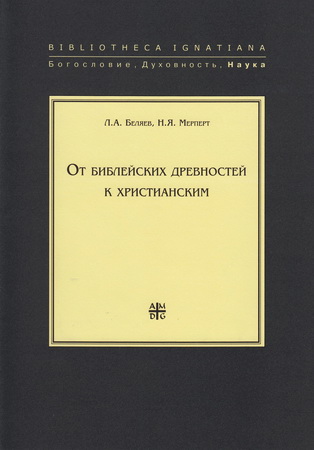
The Catholic Study Bible - 3rd edition - The Orthodox Study Bible

For the Christian, the Bible has an importance far more profound than its impact on culture. The Christian believes that through the turbulent and wonderful chapters of biblical history, God speaks to us. Although expressed in genuinely human terms and through very human authors, the Bible is, at the same time, the Word of God for us. Therefore, as Christians we reverence and love the Scriptures, and seek to understand them as much as we can.
The purpose of this newly revised and updated Catholic Study Bible is to enable the reader to read the Scriptures with new understanding and depth. The primary audience of this Study Bible is Roman Catholic. Some of the comments in the notes to the text, the Reference Articles, and the Reading Guides deliberately reflect Catholic experience and Catholic interests. However, the editors do not wish to exclude other Christian readers from the focus of this book. In most instances, the materials included here will be useful for all Christians who want to enter deeply into the mysteries and marvels of the Bible.
The Catholic Study Bible
Third Edition
The New American Bible
Revised Edition
Oxford University Press, 2016
ISBN 978–0–19–026726–1 (ebook)
The Catholic Study Bible - Contents
List of Sidebar Essays, Charts, and Drawings
List of Maps
Alphabetical Listing of the Books of the Bible
Abbreviations of the Books of the Bible
Key to References
General and Introductory Articles
Reading Guide
The Pentateuch – Christopher Frechette
The Deuteronomistic History – Leslie J. Hoppe
The Chronicler’s History – Richard J. Bautch
The Later Histories – Kelly Coblentz Bautch with Richard J. Bautch, and Leslie J. Hoppe
The Wisdom Books – Dianne Bergant
The Major Prophets, Lamentations, and Baruch – Katherine M. Hayes
Daniel and the Minor Prophets – John J. Collins
The Gospels and Acts – Donald Senior, Susan A. Calef, Pheme Perkins, and Justin Taylor
Paul and His Writings – Mary Ann Getty and Carolyn Osiek
The General Letters and Revelation – Luke Timothy Johnson
The Old Testament of the New American Bible Revised Edition
The Pentateuch
The Book of Genesis
The Book of Exodus
The Book of Leviticus
The Book of Numbers
The Book of Deuteronomy
The Historical Books
The Book of Joshua
The Book of Judges
The Book of Ruth
The First Book of Samuel
The Second Book of Samuel
The First Book of Kings
The Second Book of Kings
The First Book of Chronicles
The Second Book of Chronicles
The Book of Ezra
The Book of Nehemiah
Biblical Novellas
The Book of Tobit
The Book of Judith
The Book of Esther
The First Book of Maccabees
The Second Book of Maccabees
The Wisdom Books
The Book of Job
The Book of Psalms
The Book of Proverbs
The Book of Ecclesiastes
The Song of Songs
The Book of Wisdom
The Wisdom of Ben Sira (Ecclesiasticus)
The Prophetic Books
The Book of Isaiah
The Book of Jeremiah
The Book of Lamentations
The Book of Baruch
The Book of Ezekiel
The Book of Daniel
The Book of Hosea
The Book of Joel
The Book of Amos
The Book of Obadiah
The Book of Jonah
The Book of Micah
The Book of Nahum
The Book of Habakkuk
The Book of Zephaniah
The Book of Haggai
The Book of Zechariah
The Book of Malachi
The New Testament of the New American Bible Revised Edition
The Gospels
The Gospel According to Matthew
The Gospel According to Mark
The Gospel According to Luke
The Gospel According to John
The Acts of the Apostles
The New Testament Letters
The Letter to the Romans
The First Letter to the Corinthians
The Second Letter to the Corinthians
The Letter to the Galatians
The Letter to the Ephesians
The Letter to the Philippians
The Letter to the Colossians
The First Letter to the Thessalonians
The Second Letter to the Thessalonians
The First Letter to Timothy
The Second Letter to Timothy
The Letter to Titus
The Letter to Philemon
The Letter to the Hebrews
The Catholic Letters
The Letter of James
The First Letter of Peter
The Second Letter of Peter
The First Letter of John
The Second Letter of John
The Third Letter of John
The Letter of Jude
The Revelation to John
Glossary
Measures and Weights
Lectionary
The New 3-Year Cycle of Readings for Sunday Mass
Readings for the Major Feasts of the Year
Weekday Readings
Index to Reading Guide
Collaborators on the Old Testament of the New American Bible 1970
The Catholic Study Bible - The Pentateuch – Christopher Frechette
Jewish and Christian canons of Scripture agree that the books of Genesis, Exodus, Leviticus, Numbers, and Deuteronomy appear first in the canon and constitute a unit. Christians refer to this unit as the Pentateuch, a word derived from a Greek term meaning “five books/scrolls.” Jewish tradition refers to it as both the “Five Books of Moses” and the Hebrew term “Torah,” which can be translated “law” or “instruction.” When the term refers to these five books, however, the most common translation is “the law.” But these books contain much more than collections of laws. The laws are embedded within extensive narratives that account for the origins of the people Israel, and the entire Pentateuch was intended for instruction in a broad sense: to shape the way in which readers understand their origins and identity as the people of YHWH, the God of Israel. As such, these books remain fundamentally important for Christians, who claim this same God as their own.
In order to orient the reader to studying the books of the Pentateuch, this article first addresses issues of method, the kinds of questions to bring to the text in light of biblical scholarship. It then sketches the overall structure, content, and function of the Pentateuch. Next, it explains some key terms and concepts important for understanding the Pentateuch. Finally, it concludes with a list of books and articles for further reading.
Kinds of Questions to Bring to the Text
We may look at the Bible from either a diachronic or a synchronic perspective. Both terms are derived from Greek: diachronic signifies “through time,” and synchronic signifies “at the same time.” A synchronic perspective focuses on the final form of the text as preserved and keeps in view the way in which the details of the text function together. It is concerned with the dynamics of the text itself, considered at various levels, including: a unit within a book, an entire book, a set of books in the canon, or the entire canon. A diachronic perspective investigates how the biblical text achieved its present state through time. It may seek evidence to assign an approximate date and location to a given text, and may envision how the text would have functioned in that context. It may look for evidence within the text indicating multiple sources, or a process by which the text was edited. A diachronic perspective keeps in view the reality that the Bible resulted from and addressed human activity within a culture and time different from our own.
Both synchronic and diachronic perspectives are important, and they complement each other. The diachronic perspective attends to how the biblical texts have both emerged from and affected the changing realities of the faith community through time. The synchronic perspective keeps in view the dynamics of the text’s final, canonical form.
 The last decade of the twentieth century saw an historic event. In 1993, The Orthodox Study Bible: New Testament and Psalms was released as the first English Bible with study material reflecting the ancient faith of the Eastern Orthodox Church.
The last decade of the twentieth century saw an historic event. In 1993, The Orthodox Study Bible: New Testament and Psalms was released as the first English Bible with study material reflecting the ancient faith of the Eastern Orthodox Church.
St. Athanasius Academy, which had organized this effort, began receiving requests for the completion of the Old Testament—a monumental task which involved not only preparation of the study notes and outlines, but also the presentation of an acceptable Old Testament text. Though the Orthodox Church has never officially committed itself to a single text and list of Old Testament books, it has traditionally used the Greek Old Testament of the Septuagint (LXX). However, in Orthodoxy’s 200-year history in North America, no English translation of the LXX has ever been produced by the Church.
The contributors used the Alfred Rahlfs edition of the Greek text as the basis for the English translation. To this base they brought two additional major sources. The first is the Brenton text, a British translation of the Greek Old Testament, published in 1851. The availability of this work, and the respect accorded it, made it an obvious choice as a source document. Secondly, Thomas Nelson Publishers granted use of the Old Testament text of the New King James Version in the places where the English translation of the LXX would match that of the Masoretic (Hebrew) text. The development team at St. Athanasius Academy carefully studied these sources, along with other documents, to produce an English Old Testament text suitable for the project.
The Orthodox Study Bible – Ancient Christianity Speaks to Today’s World
Prepared under the auspices of the Academic Community of St. Athanasius Academy of Orthodox Theology, Elk Grove, California, Fr. Jack Norman Sparks, Ph.D., Dean
Nashville: Thomas Nelson, 2008.
The Orthodox Study Bible – Contents
- Acknowledgments
- Special Recognition
- Introduction to The Orthodox Study Bible
- The Old Testament Books Listed and Compared
- Source Abbreviations
- Overview of the Books of the Bible
- Introducing the Orthodox Church
- The Old Testament
- The New Testament
- The Bible: God's Revelation to Man
- How to Read the Bible
- Lectionary
- Glossary
- Morning Prayers
- Evening Prayers
- Index to Annotations
- Index to Study Articles
- The Seventy
- Illustrations
- Endnotes




Комментарии
Пока нет комментариев. Будьте первым!